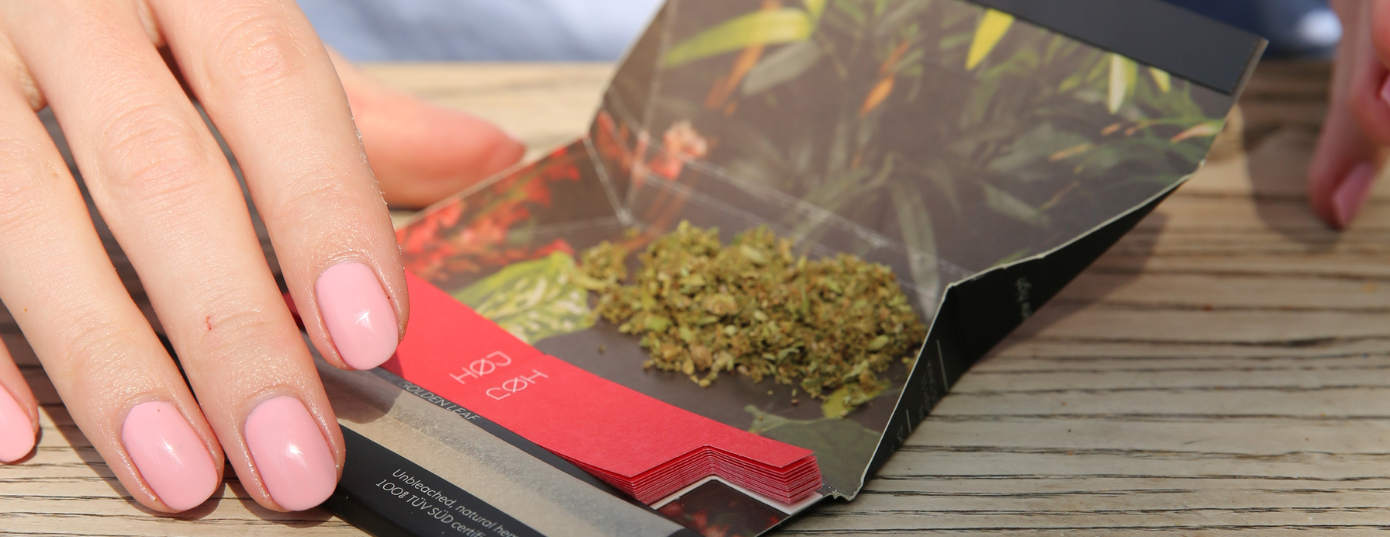Rolling papers had become an indispensable item for people who smoke weed. We have them in our wallets or in some drawer at home. I have bought and tried many different brands. In the past, all rolling papers were the same for me because I didn't really have much experience in rolling my own joints. However, now that I know more about them... I had learned that there is a quite huge difference between rolling papers out there, which might not only affect my health when I smoke but also some are affecting the environment because of the way they are produced.
In the last twenty years, a lot of rolling paper brands have flooded the market trying to please more conscious customers about the process of manufacturing and the components that they are inhaling true the smoke. Every kind of rolling paper has its own characteristics that may be attractive to the different types of smokers around the world. But, from my experience, I can say that the most important factors to consider when buying rolling papers are flavor, paper thickness, the porosity of the material, burning rate, size, packaging practicality, style, and shape.
If you've wondered about how the size of rolling papers can vary, here we have a guide for you:
Rolling papers sizes and porosity
The standard rolling paper measures are: 68-70mm long x 34-36mm wide
- 1 ¼: 76-78mm x 45-48mm
- 1 ½: 76-78mm x 60-62mm
- Double width: 76-78mm x 63-88mm
- King size: 100-110mm x 42-46mm
- Slim king-size: 105-110 x 42-46mm
Rolling papers also have different levels of porosity. This controls the ventilation and combustion rate when inhaling the herb from the paper. Some rolling papers have certain additional chemicals that make combustion slower like chlorine or calcium carbonate. Flavored rolling papers have also a lot of chemicals that should not be that good for you to ingest. As an advice from me, avoid choosing extravagant flavors and colors when buying rolling papers, these to take care of your health.
What are rolling papers made of?
Most common materials for rolling papers
- Cellulose paper:
At some point in history cellulose paper was the most common for rolling some joints. Today, it's considered a classic. It's very common to hear that cellulose paper is being mixed with other fibers in order to make an easier experience when rolling. Cellulose rolling papers are usually thicker than other types of rolling papers, that’s why I recommend cellulose paper only for beginners as it's considered a more resistant material for "easy rolling". On the other hand, the combustion rate is higher than other rolling papers and that is something that we would like to avoid.
- Rice paper:
High-quality rice rolling papers are such a perfect option if you consider yourself an eco-person because these are made of 100% natural ingredients. Basically, processed, and pressed rice. These papers are also usually the thinnest and least harmful for the lungs. These rolling papers material is quite delicate and factors such as humidity can harm their performance. The combustion rate is slow for rice rolling papers.
- Linen paper:
Sometimes linen is a material used in the mixtures when making various rolling paper types. Linen rolling papers are considered to be not that harmful to the environment and your health, since the seeds of the flax plant are highly nutritious and are also used to make rich oil with many potential benefits. Linen fibers also help the paper consistency to keep it very thin and build a resistant rolling paper at the same time. Linen rolling papers have low combustion most of the time.
- Hemp rolling paper:
In my experience, I have tried all kinds of rolling papers and I consider hemp rolling papers the best ones. Hemp rolling papers might be as thin as rice paper, depending on the manufacturer. Hemp papers usually stick to the brown color of hemp plant to avoid using artificial coloring. Hemp rolling papers burning rate is medium, but they burn out less than rice and linen papers.
What I like the most about hemp rolling papers is the sustainability they are manufactured with. Quite a lot of trees are being "saved" by producing rolling papers using hemp fiber instead of cellulose fibers. Something amazing about these type of papers is that if you think about the process itself, those papers were cannabis plants once at the beginning. So, for me, that’s the important thing about hemp papers and a huge example of self-sustainability. One of the best options for me when buying hemp rolling papers to roll my joints is HAMP, truly, the best rolling papers I’ve tried. Not only sustainable wise but functionality too… HAMP packaging is 100% user experience based to be also used as a rolling tray to avoid messy buds all over the place and includes its own air filters. Mind-blowing, right? Just what we need. You can find more information about these amazing hemp rolling papers here.
So now you have better criteria when buying rolling papers, knowing the difference between rolling papers... Buy smart, take care of your health and the environment, and go for hemp!
Author: Pipo


0 comments